The Blunder of the Hummingbird Moth
In evolutionary biology, mimicry is an evolved resemblance between an organism and another object, often an organism of another species.
Nestled in the Catskills of New York, our family’s river, the Willowemoc, winds lazily toward the mighty Delaware. For nearly 15 years, these mountains have been our cherished "second home."
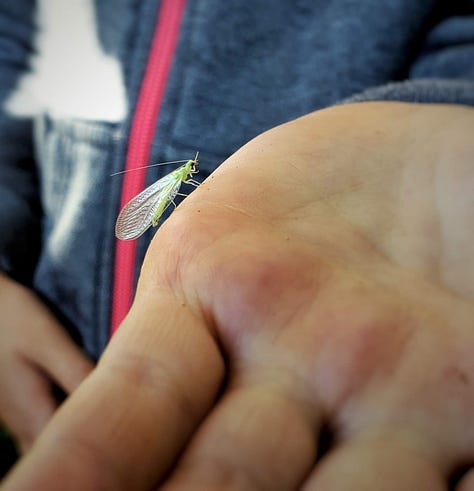







To reach a favored bend, where the trout rise and the water deepens, we cross a large untamed meadow bursting with color and life. Goldenrod sways alongside the soft purple haze of wild bergamot, while the delicate lace of Queen Anne’s lace weaves through the green. The aroma is intoxicating—Clover, Rose Hip, Black Knapweed, Bird's-foot Trefoil, warm grasses, and the sharp bite of crushed goldenrod. Bees hum busily, and Viceroy and Monarchs drift overhead, crisscrossing coordinates through the field.
It is here, amid the wildflowers and waving grasses, that we often encounter one of creation's strangest illusions—the Hummingbird Moth. Darting from bloom to bloom, hovering with impossible precision, it flits through the air in perfect mimicry of its feathered namesake. Modern biologists tell us it is "convergent evolution," where different species independently evolve similar traits or behaviors. But if mimicry exists to ward off predators, why did this little buddy take after a harmless, gentle, fragile bird? It makes no sense.
The Great Mimicry Mistake
We’re told by evolutionists that most creatures that evolve to resemble something else do so for a reason. A non-venomous snake that mimics a venomous one.
Or an insect that looks like a thorn.
But the Hummingbird Moth? This particular moth, instead of picking something fearsome—a giant hornet, a miniature hawk, or even a terrifyingly large misquote— it chose to mimic a hummingbird. Of all things.
Now, hummingbirds are beautiful, don’t get me wrong. I could watch them all day. They are astonishing little creatures. But they are not exactly terror-inducing. They are, if anything, among the most vulnerable birds in nature. They are frequently preyed upon by hawks, larger birds, frogs, and yes, even large insects.
So if the Hummingbird Moth is a product of mindless evolutionary processes, why would it “choose” a disguise that makes it look like a snack rather than a threat?
The answer is simple: it didn't. It couldn't. It is an insect. It cannot recognize what it resembles, anymore than it can select what to mimic. And it certainly cannot shape its own biology through genetic mutations over millions of years to finally craft the perfect disguise. It’s silly, if not comical.
If mimicry is truly an evolutionary process, it requires a series of fortuitous accidents—mutations if you will, that somehow lead a moth toward looking like something entirely different than it was. But there are several glaring problems:
Mimicry requires an observer. If a creature is to mimic something, it must either observe it or be observed in such a way that gives an advantage. A moth does not know what a hummingbird is. It has no way to compare itself to a bird. If mimicry developed by random mutation, why would we not see thousands of failed attempts at mimicry in nature? Instead, we see perfected mimicry with no in-between forms.
Mimicry requires foresight. Evolution, as it is taught, is a blind and unguided process. A mutation must provide a survival advantage at every stage to be preserved. But a moth that is halfway to looking like a hummingbird is just a moth. There is no advantage in vaguely resembling a bird unless the resemblance is so precise that it fools predators. How, then, could an unguided process slowly shape an insect into something resembling a bird, if all the intermediate stages conferred no survival benefit?
Mimicry requires immediate function. If mimicry was a gradual, the the purpose is defeated. For millions of years, the moth would have looked like nothing in particular. Evolutionists mistakenly claim that gradual adaptations are kept because they offer even small advantages. But what survival advantage is there in looking somewhat like a hummingbird? None.
The Evolutionary Problem of Bad Mimicry
If evolutionary mimicry is an accident of random mutation, then why are there no halfzie mimics in nature? Why don’t we see moths that look almost like birds but haven’t got the details right? If natural selection were true, this would be a logical conclusion. But what we see in all of creation is highly specific, precise engineering, suggesting purpose, not accident.
In the case of the Hummingbird Moth, the evolutionary theory stumbles massively. Hummingbirds do not frighten predators; they attract them! Unlike creatures that mimic something dangerous to survive, the Hummingbird Moth has supposedly evolved to resemble a prey animal, a decision that, if natural selection were guiding the process, should have been eliminated from the gene pool rather than preserved.
Designed, Not Evolved
If we see an incredibly well-crafted replica of something, we assume a designer. No one finds a sculpted statue of a hawk and assumes that natural erosion happened to carve it that way. If an object is crafted with precision, it implies purpose and intelligence. Why then, when we see mimicry in nature, should we assume that it happened without intelligence? The Butterfly Moth does not prove evolutionary mimicry; it disproves it.
It is a perfect example of how creatures do not shape their own features over time, but rather, their forms, behaviors, and abilities are all part of God’s design. Evolution requires endless millions of years of minute changes with no direction. But in creation, they are already functioning with precision. The Hummingbird Moth’s resemblance to a hummingbird is not the work of time and chance, but of a Designer who created creatures with beauty, variety, and, sometimes, a little humor.
The Hummingbird Moth, in all its amusing mimicry, is not a success story for evolution—it is proof of the impossibility of the contrary. The next time someone points to mimicry as an example of natural selection, point them to the Hummingbird Moth, a fluttering reminder that design, not blind chance, governs creation.
P.S.
This would have been a far more intimidating choice. :-)




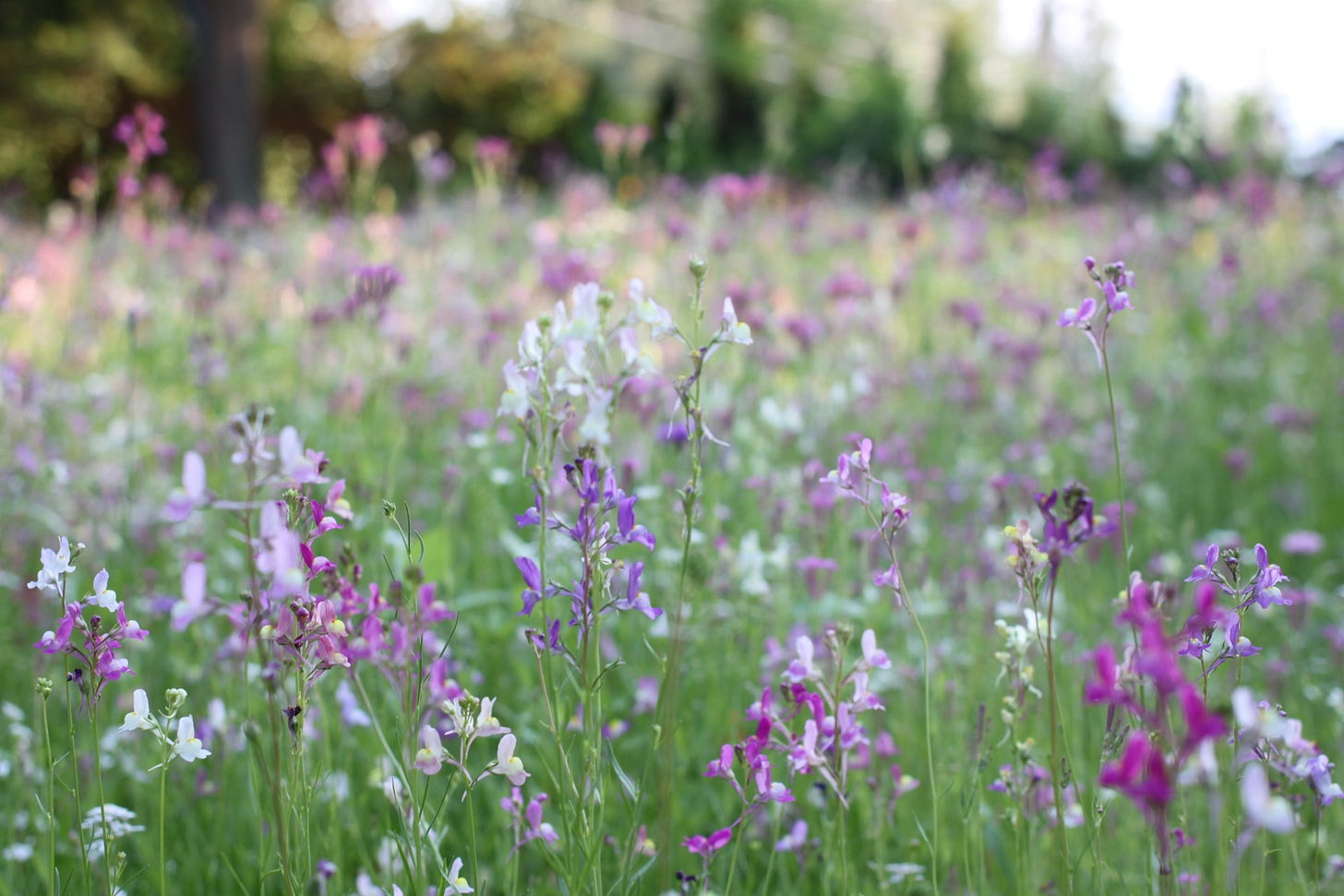



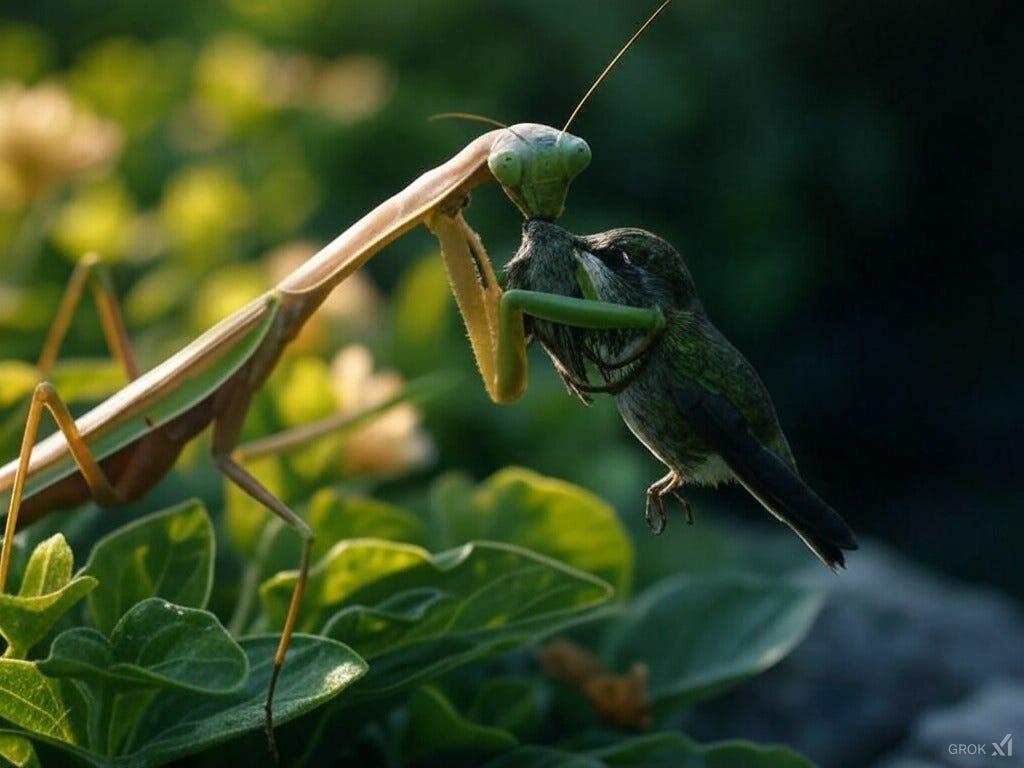
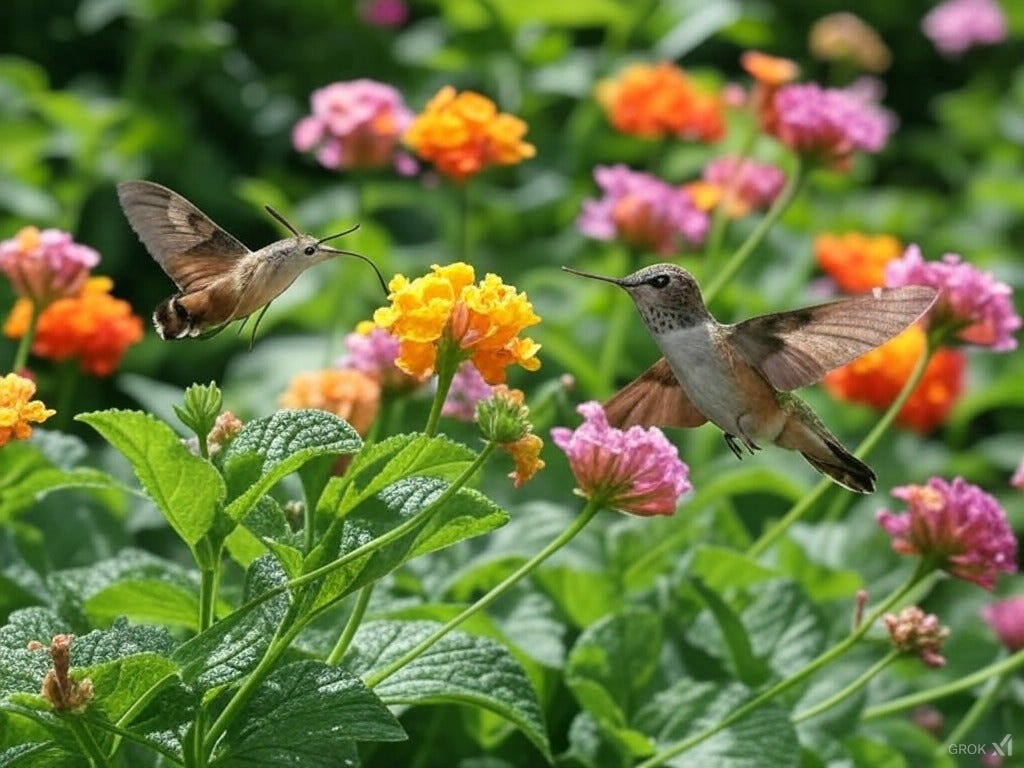
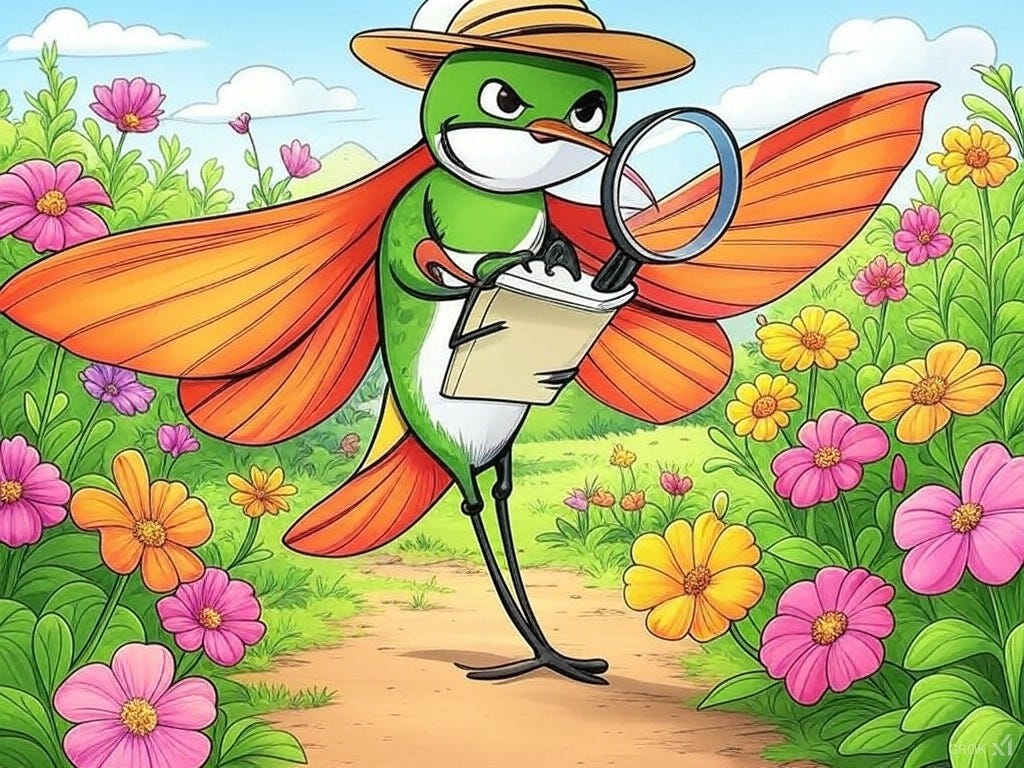

Thank, Ken. I've been thinking about some of these things, and thought, why not share them with my supporters. More to come on other topics. Thank you for your support. Blessings also to you and yours.
Bingo. Exactly.
Beautiful photos, lovely family.
God's richest blessings to and yours.